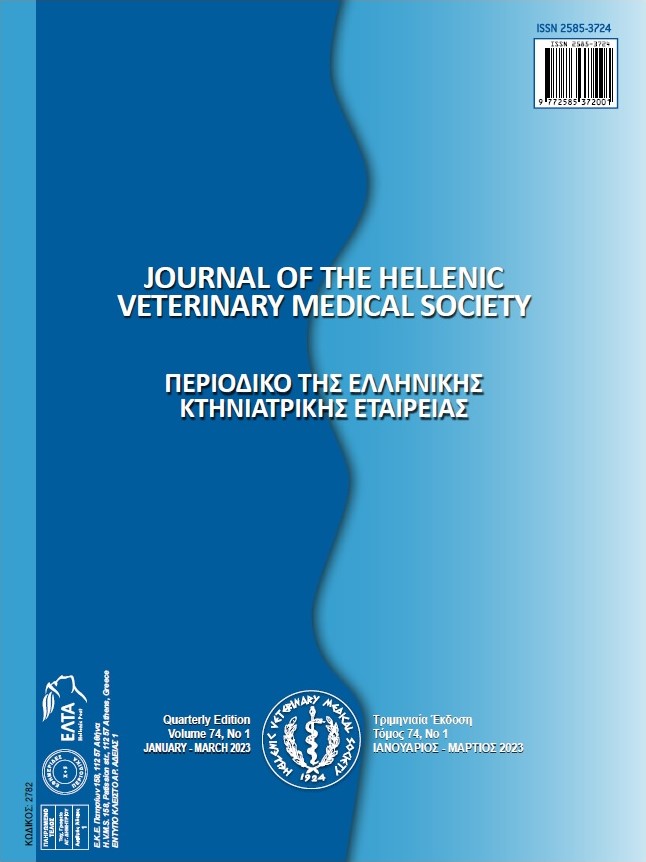Comparative study on genotypic properties of Pseudomonas aeruginosa isolated from subclinical mastitis in Türkiye

Abstract
The results of antibacterial therapy in mastitis may be related to not only the antibiotic sensitivity of the etiological factors, but also to their abilities carrying integron and virulence genes. Integrons are mobile DNA element that can capture and carry genes, particularly those responsible for antibiotic resistance. Pseudomonas aeroginosa has numberless virulence factors which are contributed to bacterial invasion and toxicity. The aim of this study is to investigate antibiotic resistance, integron and virulence gene profiles of P. aeruginosa isolates obtained from cow milk with subclinical mastitis; further, was to evaluate the relationship between the antimicrobial resistance of bacteria with the of integron and virulence gene carrying. Material of the study is consisted with 32 (9.8%) of P. aeruginosa isolates obtained from 326 subclinical mastitic milk samples. After the bacterial identification was done by classical conventional methods, polymerase chain reaction (PCR) was used to verify the genus and species identifications of the isolates and to determine the integron and virulence gene profiles. Using disk diffusion method, antimicrobial resistance was determined to fifteen antibiotics against belonging to eleven antimicrobial families. The relationship the presence of integron and virulence genes associated with antibiotic resistance, further the relationship the presence of virulence genes and antimicrobial resistance was calculated with the Chi-Square (χ2) test. Ten of virulence genes (lasl, lasR, lasB, rhll, rhlR, rhlAB, plcH, plcN, ppyR, exoT) were found in all isolates whilst a virulence gene (aprA) was not present in any isolate. It was found that 34.4% of the isolates carried any integron gene. The results showed that the relationship is important between the presence of int genes and gentamicin, amikacin, tetracycline, cefoperazone, imipenem, aztreonam, ciprofloxacin, enrofloxacin resistance and exoU virulence gene presence. Also; there were also important associations between resistance to certain antibiotics and the presence of P. aeroginosa virulence genes: ciprofloxacin with lasA; netilmicin, cefoperazone and ciprofloxacin with pilB; netilmicin and ciprofloxacin with pelA; amikacin with algD, algU, algL; aztreonam with toxA; enrofloxacin with pvdA. All isolates obtained in this study showed multiple antibiotic resistance (MDR). In these cases, the presence of integron and some virulence genes could play a prominent role in the resistance of P. aeroginosa isolates to antimicrobial drugs. This study could be important in that it is the first study to show the presence of integrons and virulence genes in P. aeroginosa isolates originating from mastitic cow milk in Turkey. The presence of antibiotic-resistant P. aeroginosa strains in cattle farms may also pose a public health risk, as these bacteria can transmit their resistance genes to humans through food consumption.
Article Details
- How to Cite
-
Turkyilmaz, S., & Ocak, F. (2023). Comparative study on genotypic properties of Pseudomonas aeruginosa isolated from subclinical mastitis in Türkiye. Journal of the Hellenic Veterinary Medical Society, 74(1), 5387–5402. https://doi.org/10.12681/jhvms.29590 (Original work published April 12, 2023)
- Issue
- Vol. 74 No. 1 (2023)
- Section
- Research Articles

This work is licensed under a Creative Commons Attribution-NonCommercial 4.0 International License.
Authors who publish with this journal agree to the following terms:
· Authors retain copyright and grant the journal right of first publication with the work simultaneously licensed under a Creative Commons Attribution Non-Commercial License that allows others to share the work with an acknowledgement of the work's authorship and initial publication in this journal.
· Authors are able to enter into separate, additional contractual arrangements for the non-exclusive distribution of the journal's published version of the work (e.g. post it to an institutional repository or publish it in a book), with an acknowledgement of its initial publication in this journal.
· Authors are permitted and encouraged to post their work online (preferably in institutional repositories or on their website) prior to and during the submission process, as it can lead to productive exchanges, as well as earlier and greater citation of published work.



